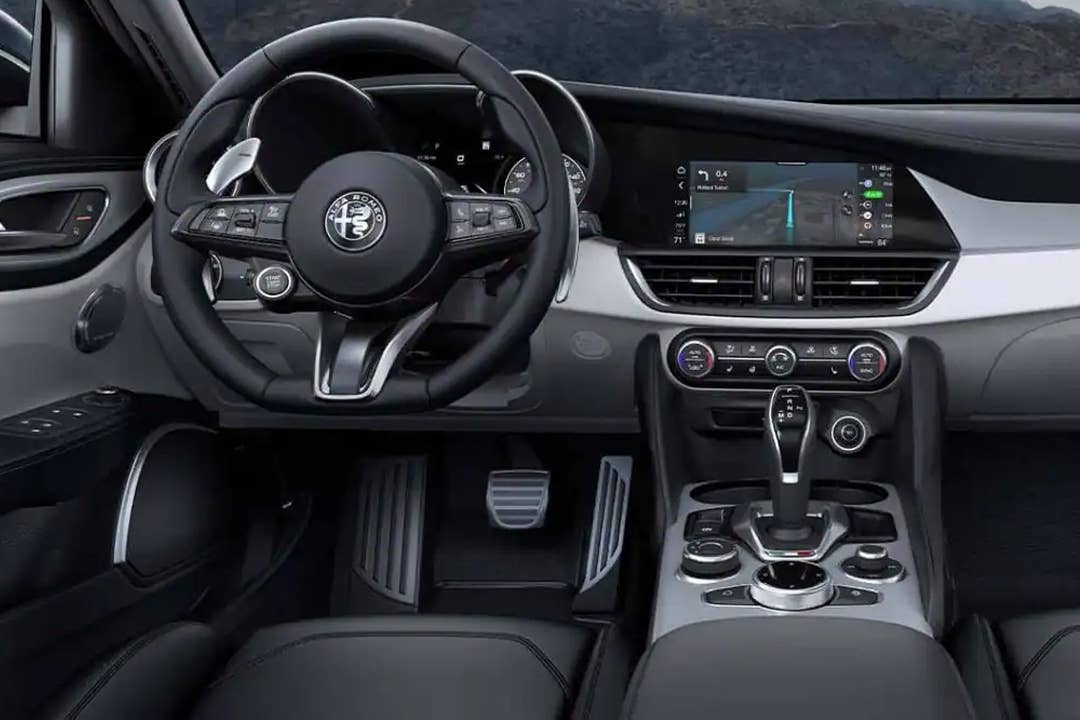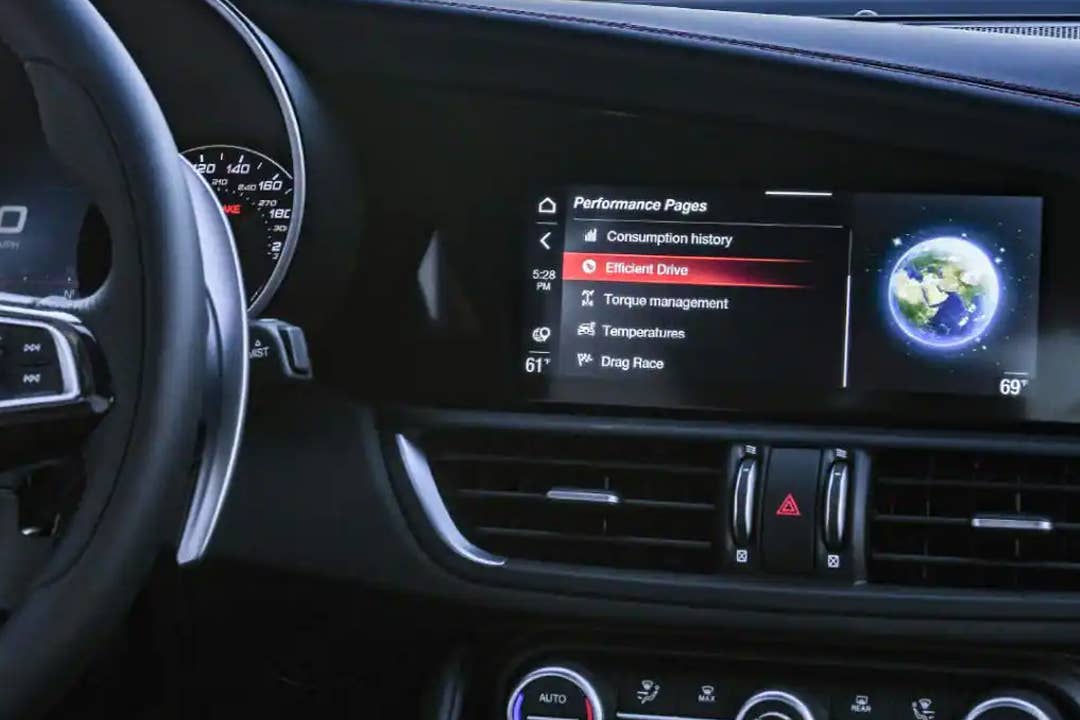Whether you adore or detest them, displays play a significant role in contemporary car interiors. Most recent models prioritize features like the entertainment screen, whether it’s the new 2022 Ford Expedition or a vehicle akin to the Mercedes-Benz EQS with its impressive Hyperscreen. While it may appear that the automotive industry is veering towards “tablets on wheels,” at least one car manufacturer is dedicated to incorporating as few screens as possible.
During a discussion with the French news source BFM Business, Alfa Romeo’s CEO Jean-Philippe Imparato dismissed the idea of inundating the brand’s cars with screens. Instead, he emphasized that the primary focus should be on the driver—not on a brightly illuminated display situated in the dashboard’s center.

via Alfa Romeo
When entering the driver’s seat of an Alfa Romeo, you’ll find a cabin that leans towards the analog side. This is a fairly uncommon sight among luxurious car brands in 2021. It’s a deliberate choice, and although other manufacturers continue to introduce increasingly screen-centered interiors, this approach doesn’t align well with Alfa’s vision.
“Alfa Romeo maintains a unique position. The driver, always in the spotlight, with a minimal number of screens in the vehicle,” stated Alfa Romeo’s CEO Jean-Philippe Imparato. “I’m not selling a car with an embedded iPad; I’m selling an Alfa Romeo.”
The automotive industry experiences rapid shifts in trends, usually spearheaded by premium brands and flagship models. New technologies come with a hefty price tag, making luxury features like illuminated logos, expansive screens, driver aids, and even electric cars attractive as symbols of status. This leads to fierce competition among premium brands vying for customers in a competitive market where the average customer retention rate is below 50 percent.
Some argue that Alfa’s refusal to conform to trends such as screens has led to its interiors feeling outdated. For instance, the Stelvio’s dashboard layout harkens back to early iDrive-era BMW models. While enthusiasts appreciate the analog vibe, the Stelvio is a luxury vehicle, and the premium market favors large touchscreens. Nevertheless, the Stelvio distinguishes itself from competitors like the BMW X3 or Mercedes GLC not through technology, but via its driving dynamics. This might mean that luxury-focused buyers seeking connected features and larger screens might look elsewhere.

via Alfa Romeo
Nevertheless, the brand may soon find it challenging to resist incorporating screens. Carmakers often compromise profitability for certain concessions. Former Ferrari CEO Sergio Marchionne once stated that creating an SUV could “devalue the brand,” yet the subsequent year, news surfaced about the forthcoming Purosangue crossover. Ferrari insists it isn’t an SUV, labeling it a “Ferrari Utility Vehicle,” which serves as a reasonable explanation from Maranello.
Stellantis has designated Alfa to be the very first in its lineup to transition to full electrification by 2027 and has recently joined forces with Foxconn to develop screen-oriented car interiors for its brands. Sooner rather than later, Alfa will need to merge its performance-driven ethos with its inevitable electric future while still managing to appeal to enough consumers to remain viable. Will this translate to a more tech-savvy Alfa with an abundance of screens? Possibly, but it seems Imparato won’t allow it to happen without a fight.
Have a tip or inquiry for the writer? Reach out directly: rob@thedrive.com
